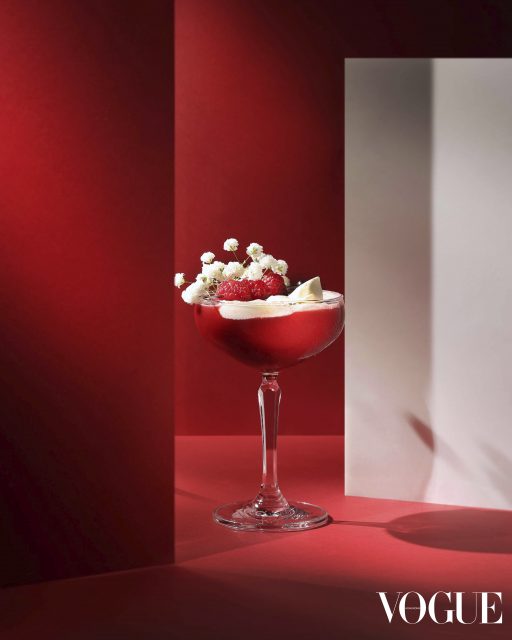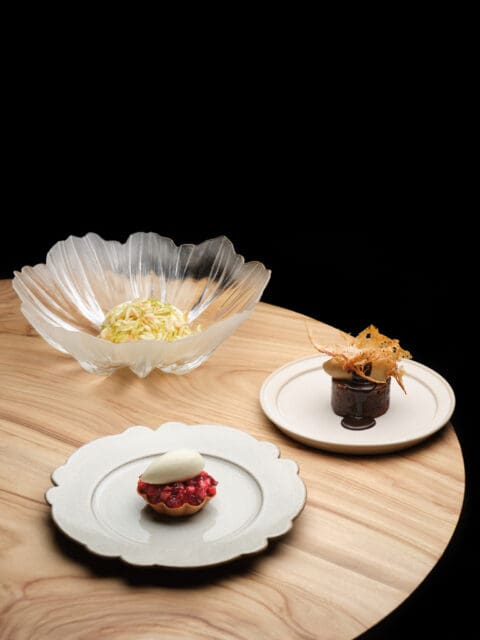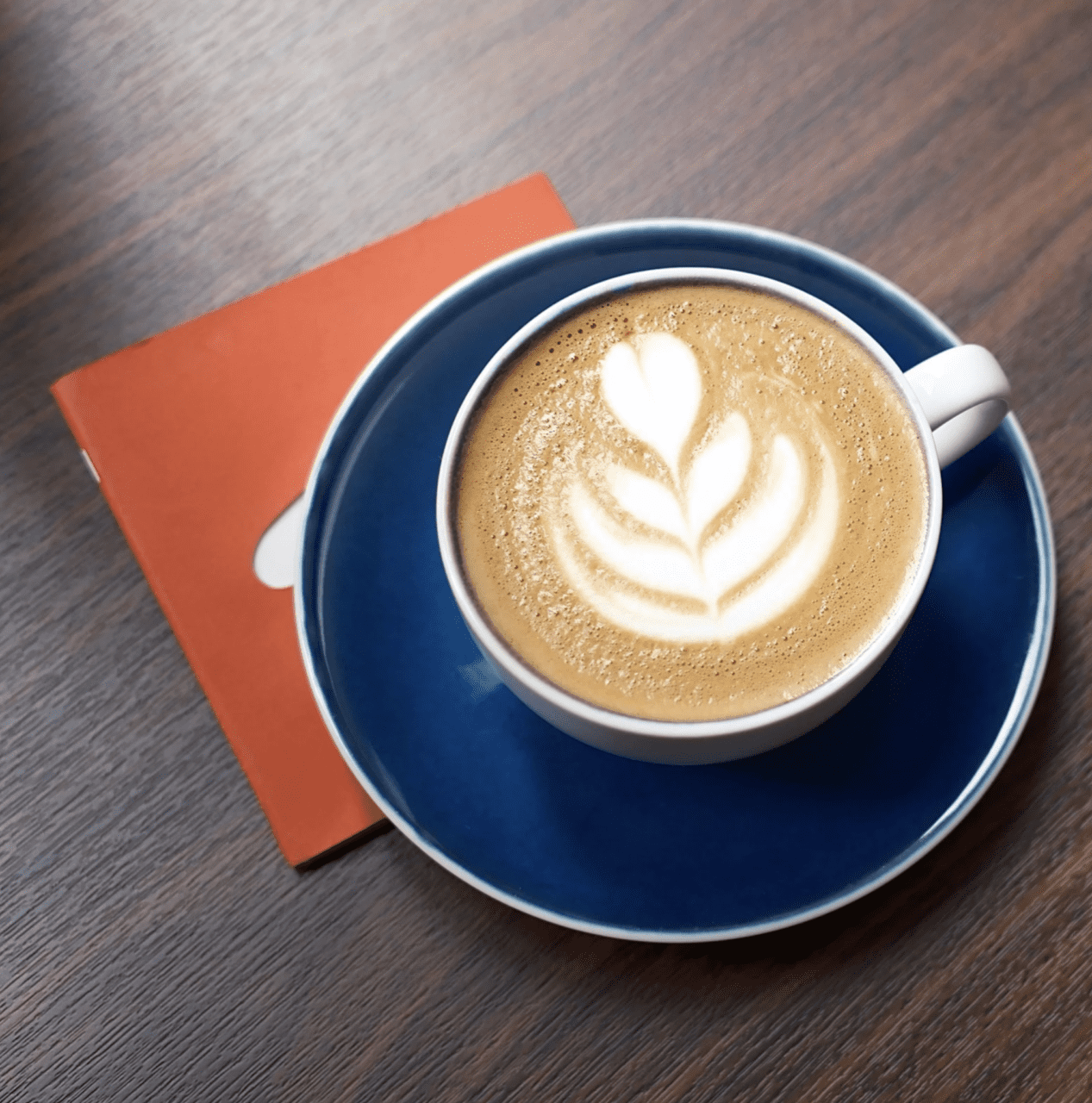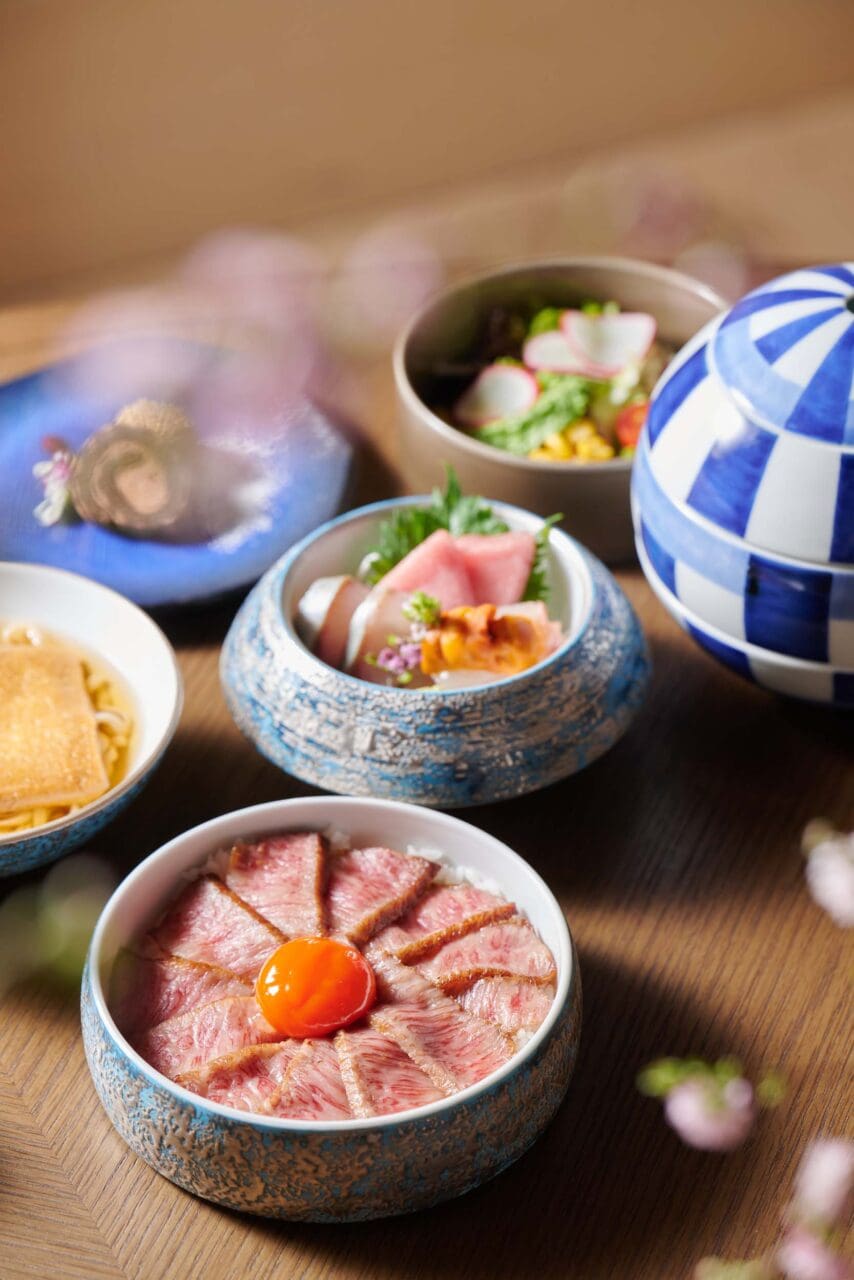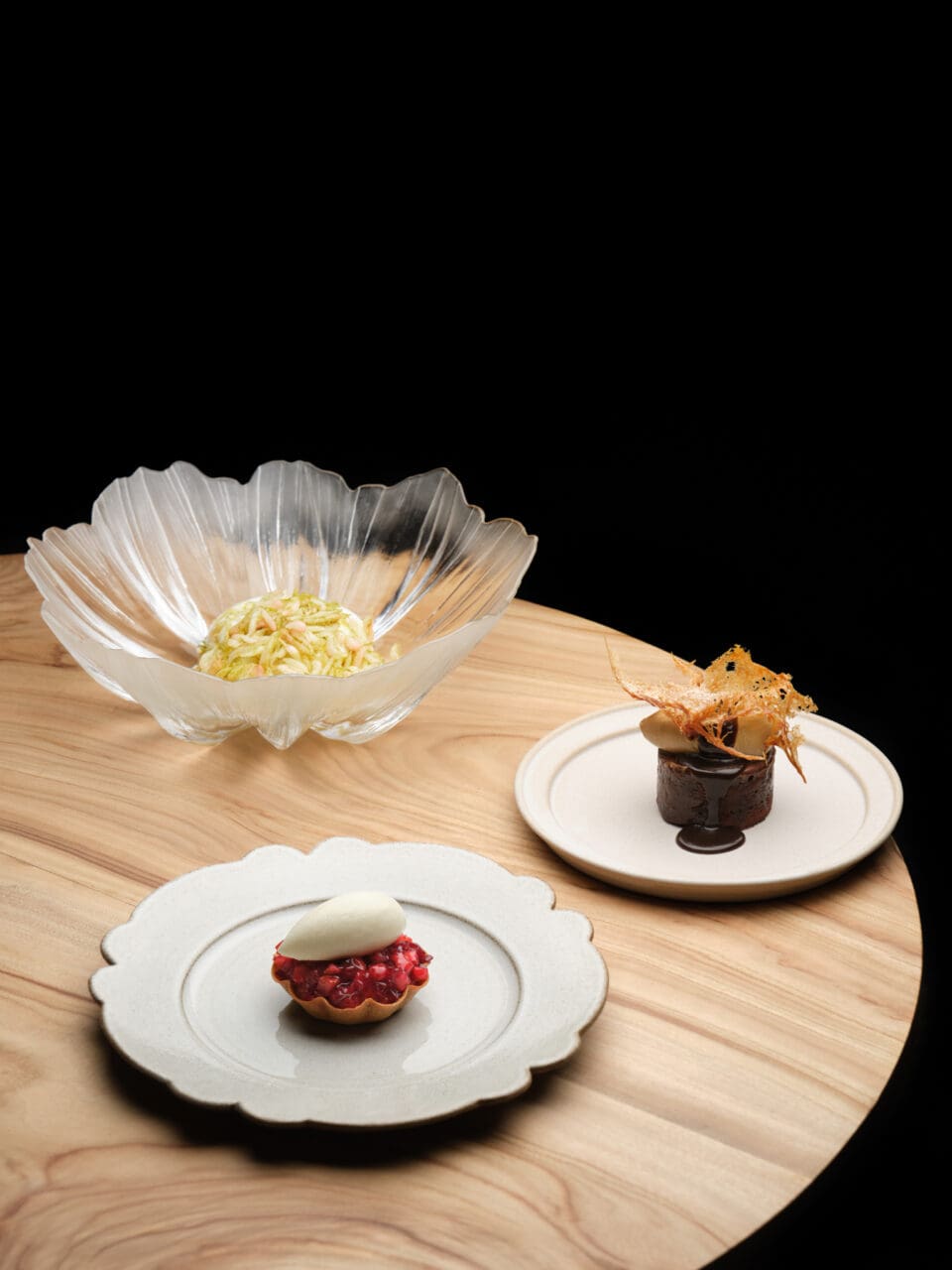If you are wandering on Peel Street, you may chance upon a white arched entrance with wooden doors marked by a lamp on each side. Beyond lies another world — for through this door is a portal to Hong Kong’s forgotten past, a portal named Kinsman.
Kinsman, by definition, means a relative by blood or by birth. Behind the bar is mixologist and dining editor Gavin Yeung, who crafts cocktails highlighting the city’s lost distilling traditions through meticulously sourced local ingredients. “I wanted to pay homage to Cantonese distilleries. When they opened in the late 19th century, a lot of them were founded by clans or by families. They were passed down through the generations from father to son. So Kinsman pays homage to that, but also to the experience of sitting together with people over drinks and really bonding in a way as if they were kin,” Yeung explains. “Beyond that, I guess you could say we want to build a community around Cantonese spirits as well because it’s a forgotten tradition.”
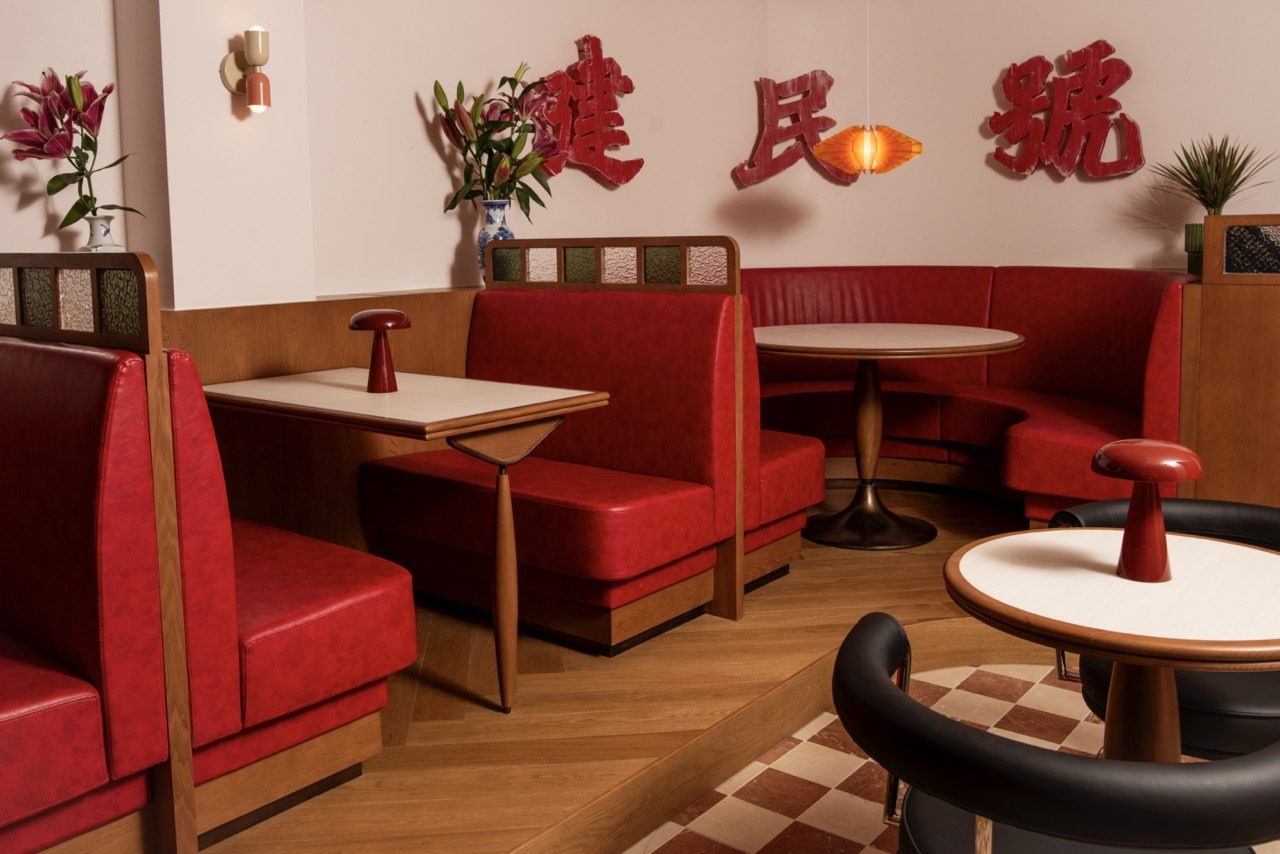
The signage of Kinsman’s Chinese name 建民號, written in the Beiwei Kaishu (北魏楷書) calligraphy script that is native to Hong Kong
Those who step foot onto Kinsman’s shophouse-esque chequered tiled floors will find themselves in a Wong Kar-Wai movie. Lush red leather booths and low lighting envelop you in an atmosphere reminiscent of intimate neighbourhood hangouts from decades past. “The interiors are inspired by the way Wong Kar-wai actually approaches moviemaking and cinematography, so sight lines are everything. When you walk in from the end of Elgin Street, you can look straight through the foyer and spot the warm glow from the outside,” Yeung says. “Inside, the slightly angled mirrors on the wall let you see the whole bar from where you’re sitting. As for the dividers with the booth tables, I wanted to put them slightly below people’s eyes so they can kind of shoot cheeky glances at people sitting at other booths,” he chuckles. “If you notice Tony Leung’s eyes in In the Mood For Love, they are concealing yet revealing at the same time. Kinsman’s interior design plays with this dichotomy, and that is what makes the experience here romantic and memorable.”
View this post on Instagram
Yeung’s determination and commitment to preserving Cantonese distilling culture, on top of Kinsman’s Wong Kar-wai-inspired concept, immediately caught F&B marketer Samson Lam’s attention. “Since I’m in the F&B marketing business, I’m fairly familiar with the Hong Kong dining and bar scene and I definitely think bars that pay homage to Cantonese spirits are missing from it,” shares Lam, who is now an investor in Kinsman. “So when Gavin first mentioned Kinsman to me, I realised it could be very successful from a marketing standpoint. Plus, I was also really into Wong Kar-wai back in the day, and I love In The Mood For Love — how could I not be a part of this project?”
Kinsman's centrepiece mural by illustrator Mally Cheung
How did Kinsman come about? Walk us through your bartending journey.
Gavin: During the pandemic, I worked at a member’s club and then got furloughed. Back then, people either started drinking a lot or did not drink at all. I was obviously the former… [laughs], and I got really into cocktail-making. I started watching YouTube videos of Japanese bartenders. The way they make cocktails is really intricate and very precise — it’s similar to a tea ceremony but with alcohol. I went through all of the classic cocktails and started making cocktails using Asian ingredients for an interesting twist. Whatever I found interesting and quite non-conventional, I would take those recipes, try to replicate them myself and have friends over to try them. They all seemed to respond pretty well to it. So over time, I guess it also kind of helped build my confidence for my first guest shift.
When bars started opening again, I linked up with my friend who owns [cocktail bar] Dio Store, and he encouraged me to do my first-ever guest shift there. Thankfully, it was pretty successful, but I was quite scared. Sometime later, I joined a media event on the Entourage chartered yacht, where I met the CEO of Singular Concepts, David. We started chatting about what we wanted to see in Hong Kong in terms of the bar scene. David wanted to see a Wong Kar-wai-inspired bar, and I thought a bar that used Cantonese and Chinese spirits was lacking in the city. We thought those two ideas came together really well. After the event, I invited him to my guest shift at The Aubrey. He came and seemed to enjoy it. After that, I was on a press trip when I received a text from him saying, “Hey, we have a potential site for your idea, do you want to come take a look?” That was literally a week after my shift. From then on, eight months of site visits followed, and we finally found our current home at the end of June 2023.
Samson, how did you cross paths with Gavin?
Samson: I first met Gavin in 2017 on a press trip I organised and invited him on. This gentleman really impressed me because he’s very sincere and really serious about his work; he did a lot of research before he wrote his story. Since then, he has become someone I appreciate. One night, over dinner at the same members’ club he worked at, he told me about Kinsman. I was so impressed. I told him, “I think you will succeed because of your personality and your work ethic.” I definitely wanted to be part of it, so I asked! I think it’s great when people pursue their passions. For example, I enjoy marketing a lot which is why I set up my own marketing agency, Rubison Marketing Solutions. And because I love what I do, I try my best to make it work no matter what. And I know Gavin will make it work too. I am so lucky to be part of this project of his.
What were your initial thoughts on the concept of Kinsman?
Samson: I went to his guest shift at Woo Cheong Tea House. It was the first time I tried a cocktail crafted from Cantonese spirits or Chinese wine. As a person who used to drink a lot, I thought it was quite different. I grew up in Hong Kong and studied in Hong Kong, but I realised there is nobody in this city who is really putting thought into preserving the tradition of Cantonese distilleries. The drink I had at the guest shift was really delicious and left a really strong impression on me.
If you were to describe Kinsman in a word, what would you choose?
Samson: I would use “timeless” because we are bringing back a certain era yet we also want this to last for a long time.
View this post on Instagram
What are the characteristics of Cantonese spirits that distinguish it from the rest?
Gavin: Cantonese spirits is kind of like a catch-all term. It’s mostly a geographical indication, but I would say most have a rice or glutinous rice base. They’re infused with a lot of botanicals native to Guangdong province, a lot of TCM herbs that are pretty obscure — they don’t even really have English names; they’re all referred to by their Latin names.
Do you remember one of the first you came across?
Gavin: It was Yuk Bing Siu, pork fat macerated in Cantonese rice spirit. I saw a photo of it on Facebook, and I was very intrigued by the label because it looked so old-fashioned. It was an antique label I’d never heard of, and I had never tasted anything similar until that point. It blew my mind that this stuff was still being made. Even better, you could buy it in Sheung Wan from the Wing Lee Wai store, a 125-year-old brand. It’s also very affordable and a good gateway into Cantonese spirits.
What was the first cocktail you came up with for Kinsman?
Gavin: I would say it’s the Rednaxela. Coming from a writing background, it’s always pretty fun to do some wordplay — it informs the whole concept. There’s a lot of wordplay with Rednaxela because it’s the name of a street in Central that was supposed to be “Alexander”, but it got flipped. There’s also a classic cocktail called the Alexander and I thought it would be fun to do a really Hong Kong version of that because Rednaxela is a word you would only find in Hong Kong. I only realised this afterwards, but at the end of Rednaxela Terrace is the Jamia Mosque, which happens to be the same colour as this kind of Fire King-inspired jade receptacle we serve the drink in, so there’s this fun connection too.
Samson, what’s been your favourite drink at Kinsman so far?
Samson: The Kowloon Dairy. Before our soft opening, Gavin actually launched a cocktail omakase and we started with the Kowloon Dairy. I think it’s a perfect drink to kickstart your night with. It’s not too strong, and it is balanced and smooth; it prepares my palate for the other beverages. So whenever I bring my friends here, I suggest they start with Kowloon Dairy.
Which drink took the longest to create?
Gavin: Probably also the Kowloon Dairy. When I did the guest shift for Magnolia Lab, they had two bottles: the Roselle liqueur and the other Magnolia. Generally, for my guest shifts, I would do three drinks. So obviously, the first two were simple — I used either roselle or magnolia. But I was struggling with the third drink. I decided to combine both in equal measure. It resulted in a chocolatey, nutty flavour, which is pretty interesting because it’s not a flavour that’s really present in Cantonese cuisine. There’s also a salted cream milk cap on top, which is something you see in bubble tea a lot, something that everyone knows.
Are there ingredients that you are still looking to experiment with? Any future additions to the menu?
Gavin: One of our newest cocktails, he Starling Spritz, is named after Starling Inlet, a body of water that separates Hong Kong and Shenzhen. Along the coastline of Starling Inlet you’ll find a lot of these old clan villages where people still lead a life surrounding agriculture. They’re farming papaya or wampee, which is kind of like a more sour longan. Every season, the Starling Spritz features a different local fruit to spotlight the lesser-known types of produce that we can find in our own backyard – right now, it’s the guava.
View this post on Instagram
Out of curiosity — We noticed that you put a specific quote from “In The Mood For Love” on Kinsman’s Instagram page. Does this quote mean something special to you?
Gavin: It informs the ethos of Kinsman because, in this context, it’s about a love story, but you can also interpret it to be you’re looking back at this period that’s long gone. And you’re looking back at it from a distance, the distance of time, as if through a dusty windowpane separating you from the past, yet also allowing you the space to reinterpret the past in a different way. So, I feel like the minimalism of this interior, the slight abstraction of different design motifs, like the red, the wood — it’s like a result of that distance between us that time.
Any special memories you’ve made over a drink?
Gavin: Well…[chuckles] I think for me, it’s the general feeling of escapism: you walk into a bar, and you know that you’re with people that you really are looking to have a great time with. At the end of the day, the cocktails are a reason for you to come into a bar, but the actual reason you keep coming back is for the feeling that you leave with. For Kinsman, I just wanted to create a space that was able to stick in people’s minds, from the colour to the crazy mural. The smaller details as well – the lighting and how people look in the space – are really important. Like, do they look good? Because a lot of places in Hong Kong use really bad lighting. Everyone feels terrible, and you feel mildly uncomfortable when you go under spotlights so I’m just using those past experiences to create a space which is super comfortable to be you.
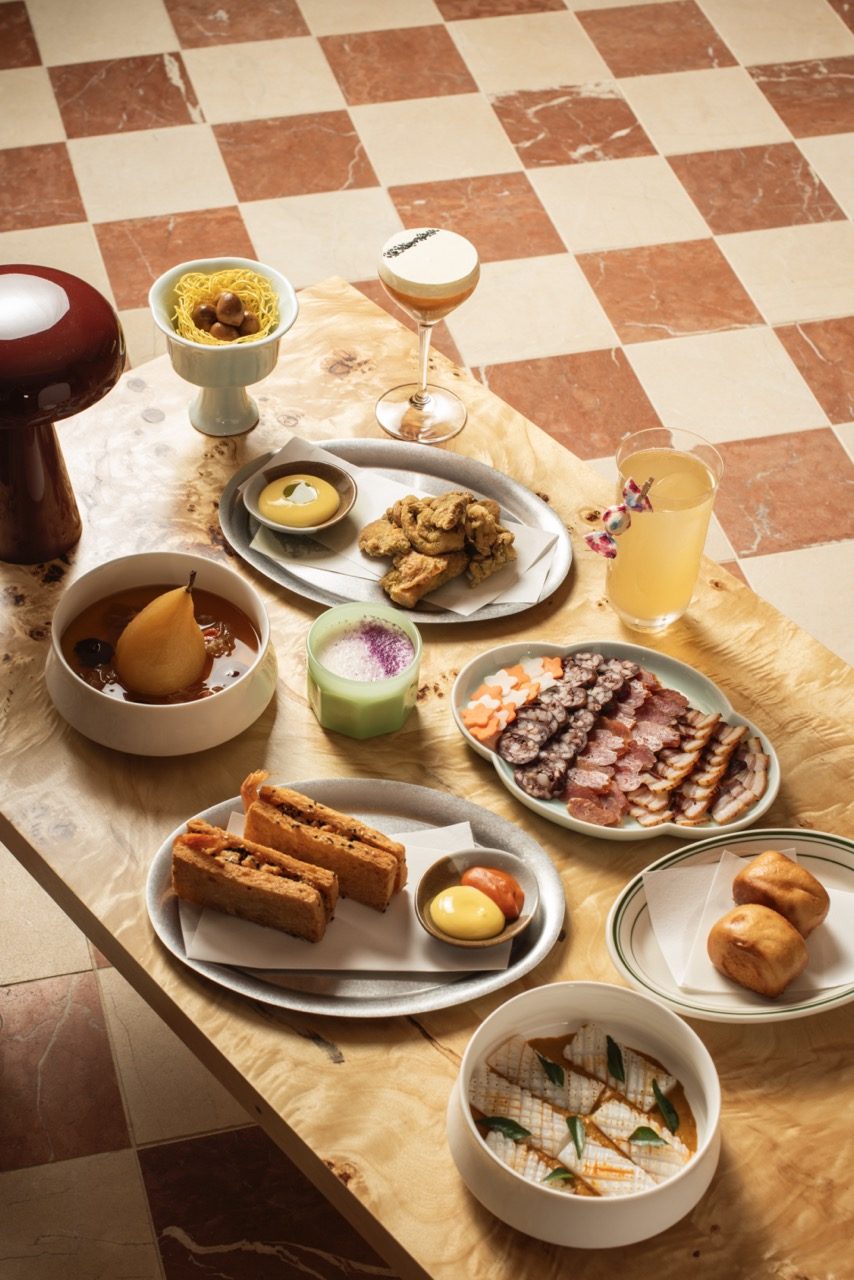
Kinsman serves both savoury and sweet delicacies, including their iconic lap cheong platter, shrimp toast, poached pear and red date dessert soup and more
How do you think the food at a bar makes or breaks an experience?
Gavin: I think the food is another way to bring the brand forward or flesh it out a bit more. From my experience, the most successful restaurant brands or bar brands are ones that have a lot of facets to them, a lot for people to come back for. Drinks are kind of like an adult thing, you know? It’s something you don’t encounter until you’re old enough, hopefully. (laughs) But food is something that reaches much further back into childhood, into the notions of family. So in addition to the drinks, I think food is another way of making people feel a certain way. Nostalgia is something that is free of cynicism. It’s like a trigger. When you hit it, you help people feel a certain way. It’s these little details that mould the experience.
Do you typically go for a good ol’ classic or a contemporary cocktail?
Samson: Actually, I think mixology is about creativity. Creative things usually take inspiration from past experiences or past successes, so it’s not totally new. And I quite like the reinvention of things. Making things timeless is all about how we can add new energy to something in a positive sense, not to change something but to breathe new life into it by injecting new elements. That is the kind of creativity I like and I enjoy drinks that reflect that.
Gavin: Contemporary cocktails. One of the reasons why I love fine dining is because you can try or taste new flavours that aren’t anywhere else. So, I think cocktails are an even easier way of creating new flavours. You just mix the right spirits together, and you could get something entirely new that no one else has tasted before. For me, ordering the same classic at every single bar you go to is like ordering the same dish regardless of what restaurant you’re in, which doesn’t make too much sense. You go to a restaurant because you want to try things that you can’t make at home right? It’s the same for bars for me.
Samson, should we expect to see you behind the bar? Have you made your own drinks before?
Samson: I make a lot of gin and tonic. Every now and then I need to go back to London, so I always try different gins there and experiment with my very own gin and tonic, which I tend to make fruitier and spicier with my family members as my guests. I’m really into mixology, but I’m not as professional as Gavin. (laughs)






